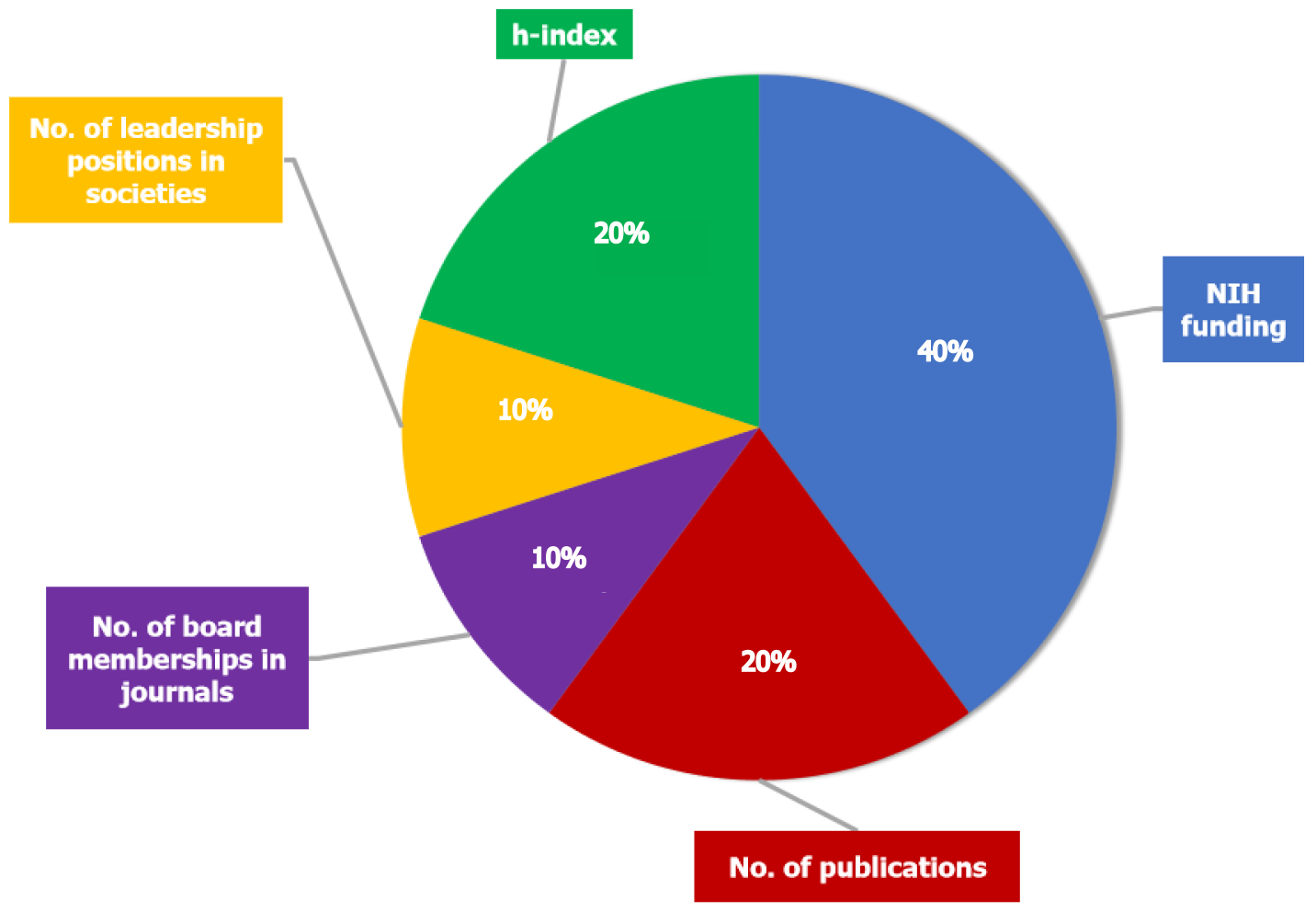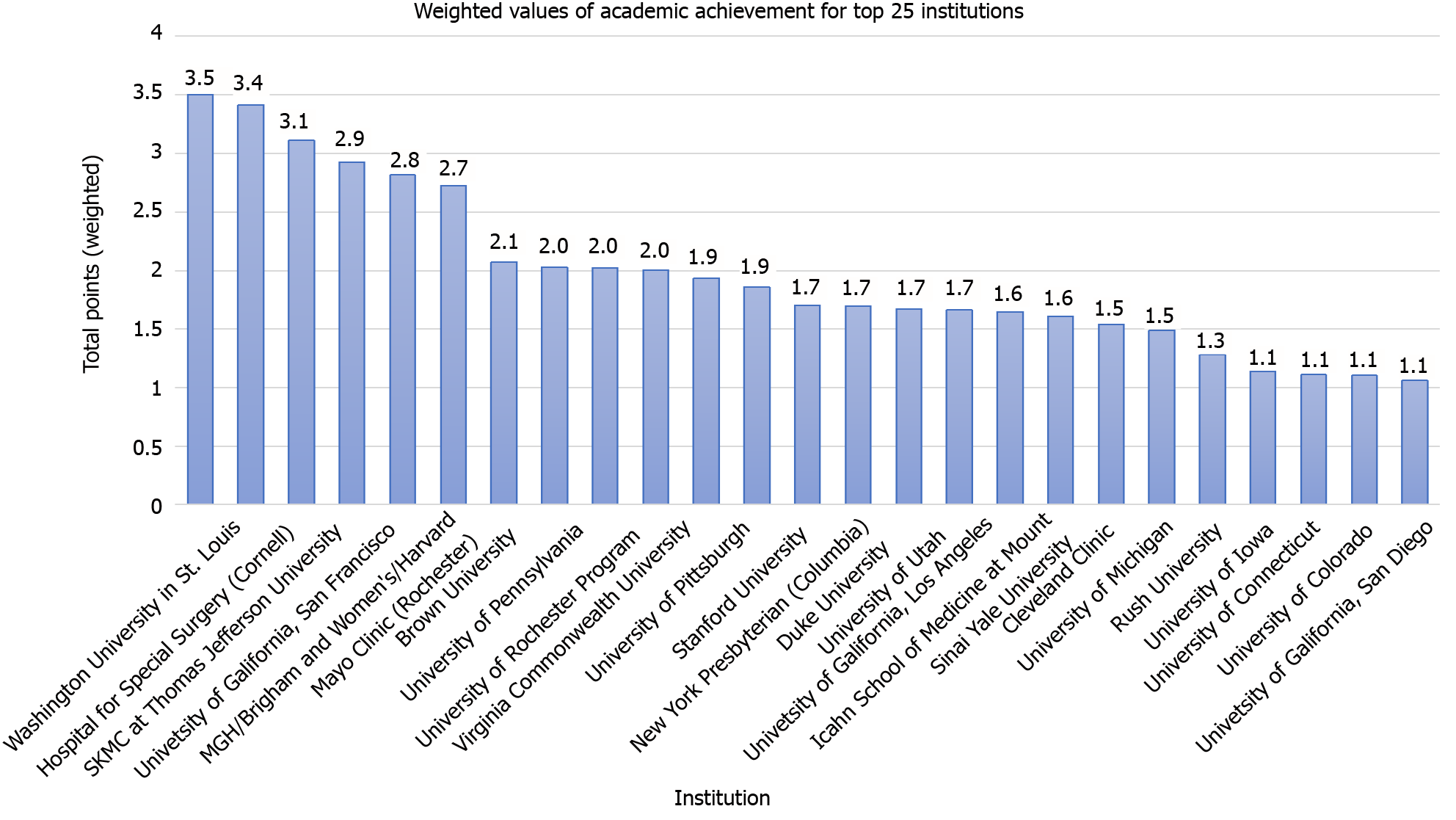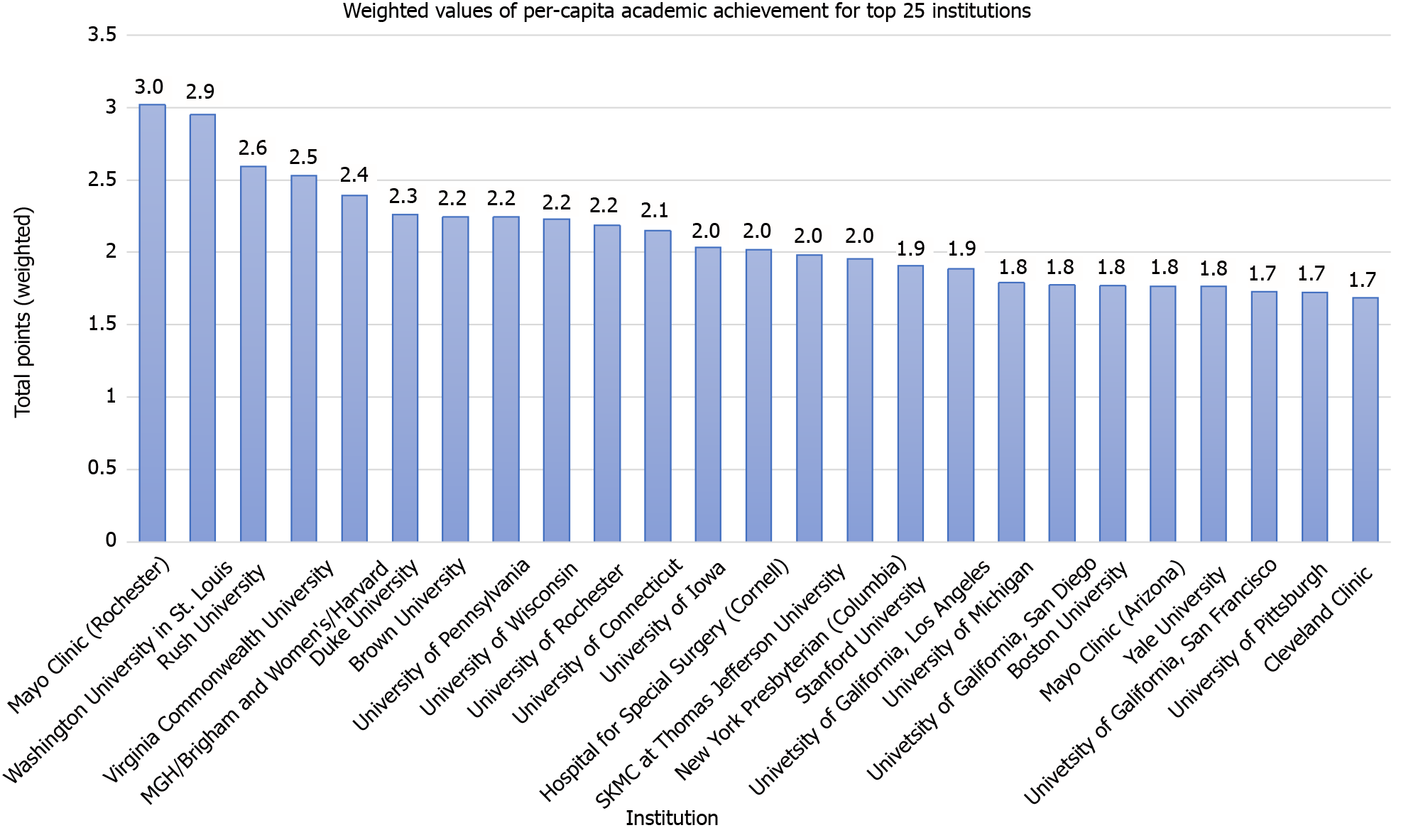Copyright
©The Author(s) 2022.
World J Orthop. Feb 18, 2022; 13(2): 201-211
Published online Feb 18, 2022. doi: 10.5312/wjo.v13.i2.201
Published online Feb 18, 2022. doi: 10.5312/wjo.v13.i2.201
Figure 1 Weighted algorithm showing overall academic achievement.
The five criteria used to evaluate each academic orthopaedic program’s contributions are shown. Metrics of original academic thought-National Institutes of Health funding (2014-2018), h-index and total number of publications-were weighted to each represent 40%, 20% and 20%, respectively, of the overall score. Metrics of leadership-editorial positions and society leadership in 2018-were weighted to each represent 10% of the overall score. Each programs’ individual score in each category was multiplied by the weight of the criteria and summed to create a weighted score of overall academic achievement. h-index: Hirschberg-index; NIH: National Institutes of Health.
Figure 2 A total of 176 United States academic orthopaedic surgery programs received points using a weighted algorithm.
The overall order of the 25 most cumulatively academically productive programs using data from 2014-2018 is shown.
Figure 3 A total of 176 United States academic orthopaedic surgery programs received points using a weighted algorithm.
The overall order of the 25 most academically productive programs using data from 2014-2018 and normalizing for the number of faculty per program is shown.
- Citation: Trikha R, Olson TE, Chaudry A, Ishmael CR, Villalpando C, Chen CJ, Hori KR, Bernthal NM. Assessing the academic achievement of United States orthopaedic departments. World J Orthop 2022; 13(2): 201-211
- URL: https://www.wjgnet.com/2218-5836/full/v13/i2/201.htm
- DOI: https://dx.doi.org/10.5312/wjo.v13.i2.201











